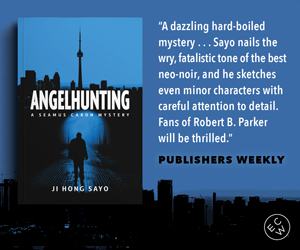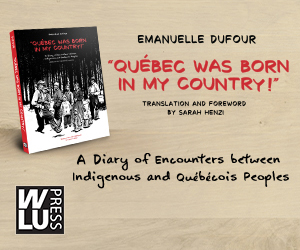The In Character Interview, with Monica Arnaldo
Worry worms its way in with all of us at times, but what if our worries become a little bit over the top? This is the problem Margo encounters in Monica Arnaldo's sweetly funny Margo Thinks Twice (Owl Kids Books). When her mother's well-meaning advice has Margo dreaming up wild worst-case scenarios, Margo has to learn to curb her anxiety without losing her creative, wacky imagination.
We're pleased to welcome Monica to the site today as part of our In Character interview series, to talk about Margo and how she came to be both as a character and a work of art for the picture book author and illustrator.
Monica tells us about the exciting first moment of familiarity with a new character, her advice for writing a convincing child narrator, and what she has in common with Margo.
Open Book:
Tell us about the main character in your new book.
Monica Arnaldo:
Margo is a bright and creative little girl, who runs into trouble when her active imagination leads her to over-think ordinary situations. It doesn’t take much more than a passing remark from her well-meaning mother to set her mind to work cooking up all sorts of worst-case scenarios.
OB:
Some writers feel characters take on a "life of their own" during the writing process. Do you agree with this, or is a writer always in control?
MA:
I would absolutely agree. Even within the relatively limited pages of a picture book, somehow this still seems to happen. It’s something I’ve also noticed as an illustrator—when I’m first pinning down the look of the character for the artwork, after trying out a few different facial quirks or hairstyles, there’s invariably a moment when the design feels just right and the face that emerges feels oddly familiar.
OB:
How do you choose names for your characters?
MA:
I find it difficult to begin fleshing out a story before knowing what to call my main character, so I’ll often go with the first thing that comes to mind, just to keep the process moving. Of course, the danger there is that when the time comes to revisit the name, once the story has taken shape, I find myself reluctant to change it. Sometime between the first draft and the earliest illustrations, the name becomes cemented to that character.
OB:
What is your approach to crafting dialogue, particularly for your main character? Do you have any tips about writing dialogue for aspiring and emerging writers?
Your CanLit News
Subscribe to Open Book’s newsletter to get local book events, literary content, writing tips, and more in your inbox
MA:
Dialogue is so tricky, particularly when trying to write convincingly in the voice of a young child. A tip that’s been incredibly helpful for me is “less is more”—hardly a trade secret, but still true. The more I can simplify and pare down a line, the more likely it is to be believable to readers. I think parents and kids are especially good at detecting an inauthentic exchange between a parent and child in a book. I try to keep that in mind as I write, and imagine the story being read aloud in that context.
OB:
Do you have anything in common with your main character? What parts of yourself do you see in him or her, and what is particularly different?
MA:
As someone prone to over-thinking (and maybe just a bit of a worrier) I definitely identify with Margo. I had a tendency to take things quite literally as a child, so my parents’ best efforts to instill a healthy fear of household dangers in me would often backfire—I don’t think I touched an oven until I was well in to my teens.
OB:
Who are some of the most memorable characters you've come across as a reader?
MA:
Violet Baudelaire immediately drew me in when I first picked up Lemony Snicket’s A Series of Unfortunate Events as a child. She’s a brilliant inventor, endlessly resilient, and best of all, she and her siblings are always outwitting the grown-ups. Coraline Jones also won me over instantly, as did Matilda (the latter also had me fervently trying to discover my own secret telekinetic powers). I think that, when you’re a young reader, there’s something irresistible about a book that takes young characters seriously, even while the adults in the story overlook or undermine them.
OB:
What are you working on now?
MA:
I’m in the middle of the illustration process for a new children’s book all about the highs and lows of sibling life. It’s a subject I find endlessly dramatic and entertaining and can’t wait to share with readers.
Drawn to illustration by her passion for children’s books, Monica Arnaldo is a graduate of Sheridan College’s Illustration program. She combines a variety of media, including watercolour, pencil crayon, acrylic, and graphite, to create images full of character. She and her dwarf parrot, Gordon, currently divide their time between Toronto and Montreal, Canada.




